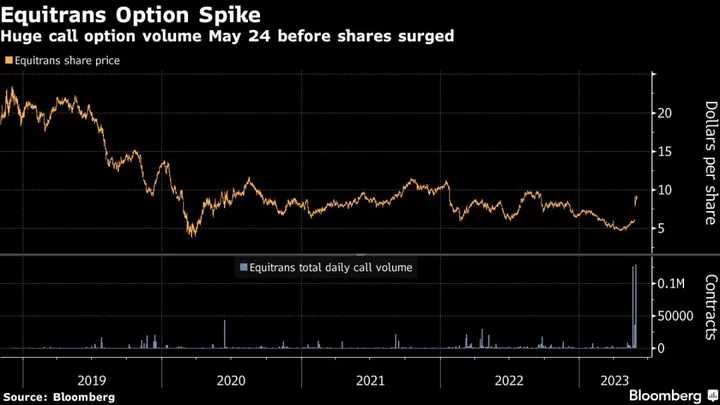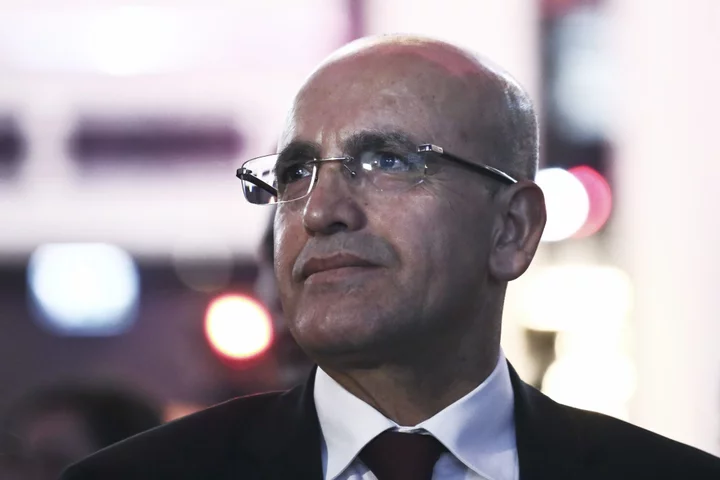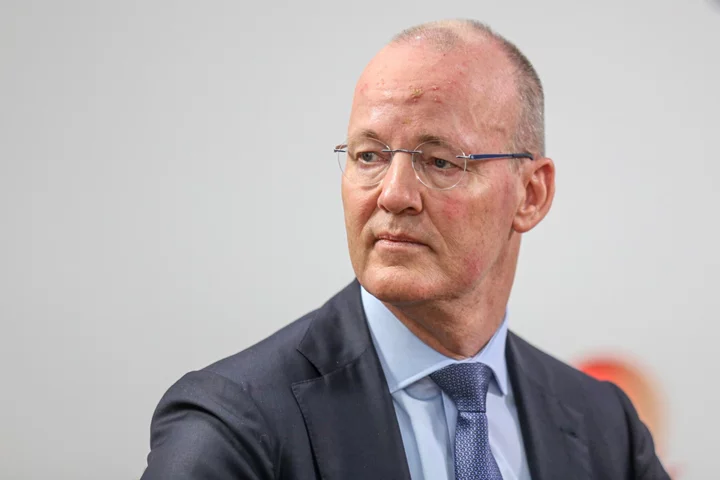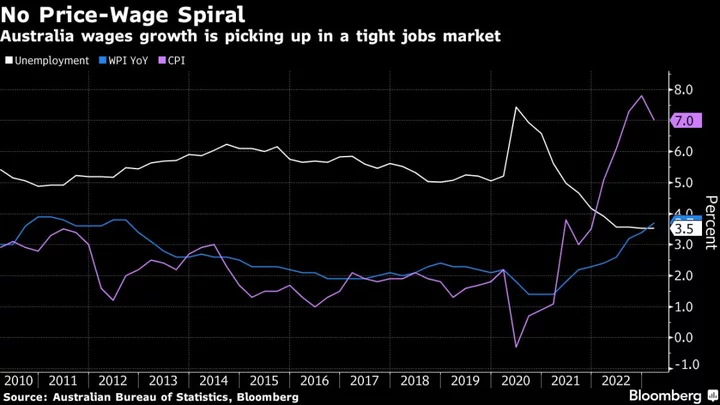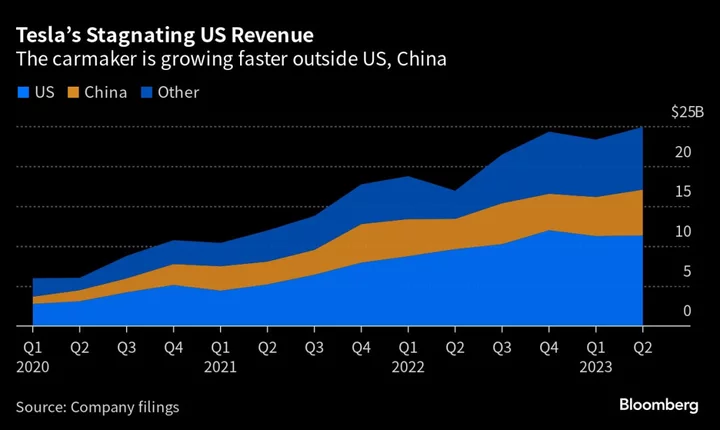Ever since ChatGPT went viral last fall, companies have touted many ways artificial intelligence can make our lives easier. They’ve promised superhuman virtual assistants, tutors, lawyers and doctors.
What about a superhuman chemical engineer?
London-based startup Orbital Materials would like to create just that. The startup is working to apply generative AI — the method behind tools like ChatGPT — expressly for accelerating the development of clean energy technologies. Essentially, the idea is to make computer models powerful and sharp enough to identify the best formulas for products like sustainable jet fuel or batteries free of rare-earth minerals.
Jonathan Godwin, an Orbital Materials co-founder, imagines a system that’s as accessible and effective as the software engineers use today to model designs for things like airplane wings and household furniture.
“That, historically, has just been too difficult for molecular science,” he said.
ChatGPT works because it’s adept at predicting text — here’s the next word or sentence that makes sense. For the same idea to work in chemistry, an AI system would need to predict how a new molecule would behave, not just in a lab but in the real world.
Several researchers and companies have deployed AI to hunt for newer, greener materials. Symyx Technologies, a materials discovery company formed in 1990s, wound down after a sale. More recent companies have gained traction making petrochemical alternatives and programming cells.
Still, for many materials needed to decarbonize the planet, the technology isn’t there yet.
It can take decades for a new advanced material to move from discovery to the market. That timeline is way too slow for the businesses and nations looking to rapidly cut emissions as they race to meet net zero targets.
“That needs to happen in the next 10 years, or sooner,” said Aaike van Vugt, co-founder of material science startup VSParticle.
AI researchers think they can help. Before launching Orbital Materials, Godwin spent three years researching advanced material discovery at DeepMind, Google’s AI lab. That lab released AlphaFold, a model to predict protein structures that could speed up the search for new drugs and vaccines. That, coupled with the rapid takeoff of tools like ChatGPT, convinced him that AI would soon be capable of conquering the material world.
“What I thought would take 10 years was happening in a matter of 18 months,” he said. “Things are getting better and better and better.”
Godwin compares his method with Orbital Materials to AI image generators like Dall-E and Stable Diffusion. Those models are created using billions of online images so that when users type in a text prompt, a photorealistic creation appears. Orbital Materials plans to train models with loads of data on the molecular structure of materials. Type in some desired property and material — say, an alloy that can withstand very high heat — and the model spits out a proposed molecular formula.
In theory, this approach is effective because it can both imagine new molecules and measure how they will work, said Rafael Gomez-Bombarelli, an assistant professor at MIT, who advised Orbital Materials. (He said he is not an investor.)
Right now, many tech investors are prowling for companies that can turn a profit by improving greener material production. That’s particularly the case in Europe, where regulators are forcing manufacturers to lower carbon emissions or face stiff fines. The markets for advanced materials in sectors like renewable energy, transportation and agriculture are set to grow by tens of billions of dollars in the coming years.
Some researchers, like those at the University of Toronto, have set up “self-driving labs” that pair AI systems with robots to search for new materials at unparalleled speeds. Dutch startup VSParticle makes machinery used to develop components for gas sensors and green hydrogen.
Think of it like a DNA sequencer in a genomics lab, said co-founder van Vugt, who believes his equipment can help shorten the 20-year time horizon of advanced materials to one year, and, eventually, “a couple of months.” His company is currently raising investment capital.
Orbital Materials, which raised $4.8 million in previously undisclosed initial funding, is planning to start with turning its AI gaze toward carbon capture. The startup is working on an algorithmic model that designs molecular sieves, or tiny pellets installed within a device that can sift CO2 and other noxious chemicals from other emissions, more efficiently than current methods. (Godwin said the startup, which has several AI researchers, plans to publish peer-reviewed results on this tech soon.) Carbon capture has failed to work at scale to date, though thanks to a slew of government incentives, particularly in the US, interest in deploying the technology is rapidly ramping up.
Eventually, Godwin said Orbital Materials would like to move into areas like fuel and batteries. He imagines mirroring the business model of synthetic biology and drug discovery companies: develop the brainpower, then license out the software or novel materials to manufacturers. “It’s going to take us a little bit of time to get to market," said Godwin. "But once you’re there, it happens very quickly.”
But getting the AI right is only half the battle. Actually making advanced materials in areas like battery and fuel production requires working with huge incumbent enterprises and messy supply chains. This can be even costlier than developing new drugs, argued MIT’s Gomez-Bombarelli.
“The economics and de-risking make it just way harder,” he said.
Heather Redman, a managing partner with Flying Fish Partners, which backed Orbital Materials, said most tech investors chasing the shiny penny of generative AI have failed to look at its applications outside of chatbots. She acknowledged the risks of startups working in the energy sector, but believes the $1 trillion potential of markets like batteries and carbon capture are worth the investing risk.
“We love big hills as long as there’s a big gigantic market and opportunity at the top,” she said.
Gomez-Bombarelli is aware how big these hills can be. He helped start a similar company to Orbital Materials in 2015, called Calculario, which used AI and quantum chemistry to speed up the discovery process for a range of new materials. It didn’t get enough traction and had to focus on the OLED industry.
“Maybe we didn’t make our case,” he said. “Or maybe the market wasn’t ready.”
Whether it is now is an open question. But there are encouraging signs. Computing certainly has improved. Newcomers might also have an easier time selling AI because would-be customers could more easily grasp the potential. Gomez-Bombarelli said the pitch is relatively simple: “Look at ChatGPT. We can do the same thing for chemistry.”
(Updates with additional information about Orbital Materials’ business model and quote from Godwin in paragraph 19.)


